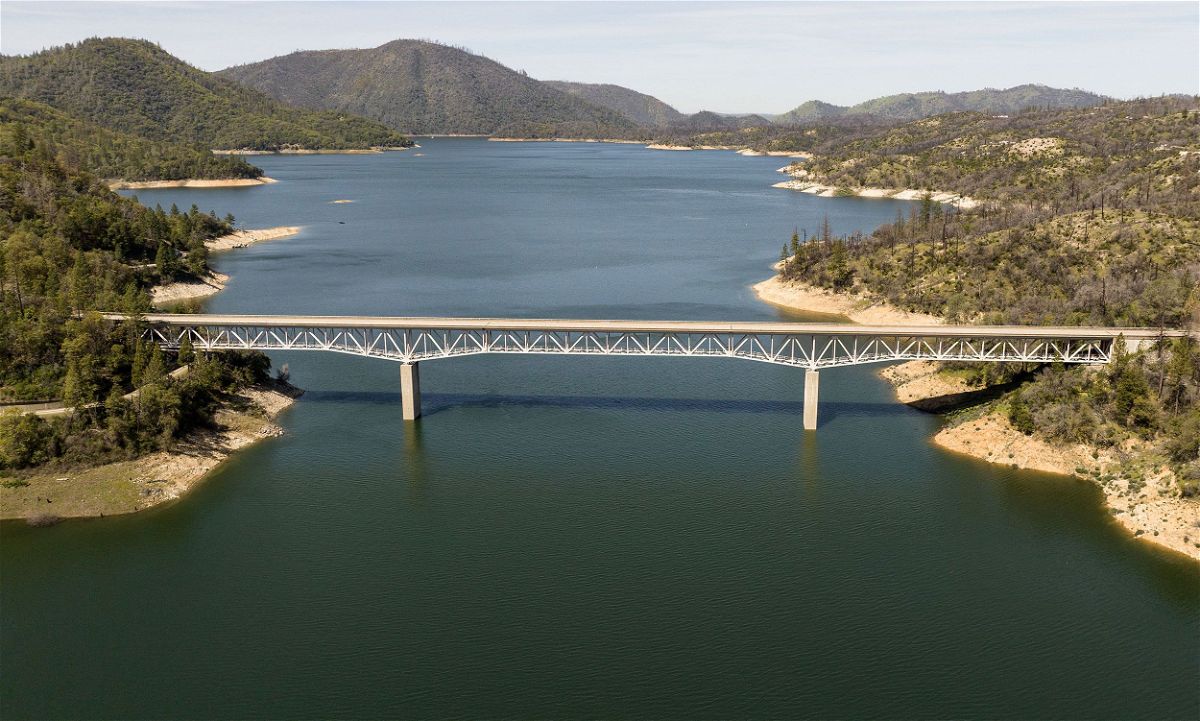California’s Lake Oroville is back at 100% capacity after being hit hard by yearslong drought

Originally Published: 14 JUN 23 14:25 ET
By Rachel Ramirez and Cheri Mossburg, CNN
(CNN) — Once a stark example of the drastic effects of California’s yearslong megadrought, Lake Oroville has rebounded and is once again filled to capacity, data from the state’s Department of Water Resources shows.
California’s drought-stricken reservoirs have seen a remarkable recovery in recent months after a barrage of storms. It’s a much-needed improvement after they had been hovering at critically low levels for the past several years, officials said.
Lake Oroville, the state’s most beleaguered and second-largest reservoir, is at 100% of its total capacity and 127% of where it should be around this time of year – a huge boost after the climate-change-fueled megadrought sucked away nearly all its water supply.
A series of heavy winter storms and the following runoff from snowmelt have added 2.5 million acre-feet of water to the lake, raising levels by more than 240 feet since December 1, the state water agency said in a community update.
“Conditions have changed dramatically in many parts of the state thanks to the series of storms that arrived in California starting in December and continuing throughout the remainder of our wet season,” Tracy Pettit-Polhemus, a manager for the State Water Project, told CNN. “This is the first time the reservoir has reached capacity since 2019.”
Between Sacramento and Redding, Lake Oroville plunged to just 24% of total capacity in 2021. The water level was so low that in August 2021 a major hydroelectric power plant was forced to shut down for the first time since it opened in 1967.
Oroville’s water level sat well below boat ramps and exposed intake pipes, which are used to send water to power the Edward Hyatt Power Plant. Shutting down the plant served as a wake-up call on how significant the drought had become.
The plant is the fourth-largest hydroelectric energy producer statewide, according to the California Energy Commission, with the ability to power up to 800,000 homes when operating at full capacity. About 13% of the state’s electricity was generated by hydroelectric power plants as of 2018.
Although Oroville’s water levels remained well below average in 2022, storms last winter brought record-breaking precipitation to the Sierra Nevada, which gave the lake’s levels a much-needed boost.
The precipitation was enough to resume power generation at the plant in January 2022, after it had been offline for roughly five months.
The California Department of Water Resources operates the State Water Project system, which includes Lake Oroville, and provides water to 29 public water agencies serving 27 million Californians and 750,000 acres of farmland.
Strategic releases are being employed to ensure there’s room for further snowmelt runoff and most boat ramps have been reopened, welcoming fishermen and campers to enjoy the recreation area. The high water level has inundated one boat ramp parking lot which will remain closed until the water recedes.
“At Oroville’s full capacity, there will be the potential for some waves to splash over the crest of the emergency spillway if we experience any particularly windy days,” said the water resources agency, a nearly unimaginable scenario just months ago.
Pettit-Polhemus said the agency will continue to “optimize operations for water storage and environmental protection while allowing for carryover storage into next year.”
Lake Oroville is just one piece of the puzzle in the larger Western water crisis. Shasta Lake, the largest reservoir in the state and cornerstone of California’s Central Valley Project, is now at 97% of its total capacity, and 119% of its historical average.
While the storms did help reservoirs across much of California, the Colorado River Basin – which supplies water to roughly 40 million people in seven Western states and Mexico – is still struggling to fill its total capacity but showing some signs of a slow recovery.
The situation in California is an example of how human-caused climate change is transforming water systems around the world, cranking up temperatures and making droughts more severe and frequent.
The-CNN-Wire
™ & © 2023 Cable News Network, Inc., a Warner Bros. Discovery Company. All rights reserved.
